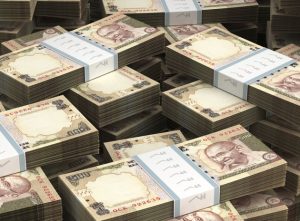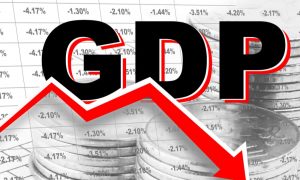 By Nageshwar Patnaik in Bhubaneswar, June 28, 2024: All animals are equal, but some animals are more equal than others. This was a proclamation by the pigs that control the government in the novel Animal Farm, by George Orwell. This famous quote is a comment on the hypocrisy of governments that proclaim the absolute equality of their citizens but give power and privileges to small elite.
By Nageshwar Patnaik in Bhubaneswar, June 28, 2024: All animals are equal, but some animals are more equal than others. This was a proclamation by the pigs that control the government in the novel Animal Farm, by George Orwell. This famous quote is a comment on the hypocrisy of governments that proclaim the absolute equality of their citizens but give power and privileges to small elite.
In our country, hypocrisy is a big issue. Politicians excel in this art. They promise moon just before the battle of ballots and once in power, they more often than not forget promises knowingly and this hypocrisy has further accentuated regional imbalances in India that has been continuing since the British colonial era. The British introduced modern industries primarily in regions with accessibility to ports or raw materials, which created industrial hubs like the present day Kolkata, Mumbai and Chennai.
Attempts were made to rectify this imbalance in the post independence period through the establishment of public sector industries in backward regions. However, these attempts had limited success, as the legacy of colonial policies and the complexity of regional disparities posed significant challenges. The era of liberalization and globalization in 1990s further intensified regional imbalances, with industries preferring regions with established infrastructure, skilled manpower, and favorable policies.
It is needless to say that India will continue as the fastest-growing major economy in coming years, but the rising growth graph is not likely to bring down the rampant economic inequality in the country, a recent poll of economists and policy experts by Reuters News Agency has recently found.
At the beginning of the millennium, the per capita income of the five richest states in India was 145% higher than that of the bottom states. India appears to be almost like a continent with different states at vastly different stages of development going by the development parameters. Underlying such stark differences are differences in the levels of per capita incomes, and such differences have risen sharply over the past two decades.
 At the beginning of the millennium, the per capita income of the five richest states (based on per capita income) in India was 145% higher than that of the bottom states. That difference rose to 289% in 2010-11, and further to 338% in 2017-18. India is home to the second-highest number of billionaires in Asia but also has crores relying on the government’s 100 days minimum guaranteed wage employment program (MNREGA).
At the beginning of the millennium, the per capita income of the five richest states (based on per capita income) in India was 145% higher than that of the bottom states. That difference rose to 289% in 2010-11, and further to 338% in 2017-18. India is home to the second-highest number of billionaires in Asia but also has crores relying on the government’s 100 days minimum guaranteed wage employment program (MNREGA).
The poorer states are constrained to raise revenues, and are able to spend much less per capita on investments in human and physical capital compared to the richer states, thus perpetuating the cycle of inequality. India allocates about 3% of its GDP to public education, which half of the 6% is recommended by the government’s National Policy on Education.
The differences in spending on health and education are particularly stark, with poorer states spending far less per person compared to richer states.
The persisting inequality among the states is evident from the fact that among the 680 exporting districts, the top hundred districts contribute approximately 87 percent of India’s total exports. Especially within these hundred districts, exporting hubs are concentrated in the top-performing states. Despite a plethora of centrally sponsored schemes which ostensibly aim to correct such imbalances, and despite attempts by successive Finance Commissions to equalize outcomes across states, development spending has not really converged across states. The development outcomes, measured in terms of multi-dimensional poverty have also not converged across states.
An analysis of data from the past decade reveals that disparities in per capita income have been on the rise. For instance, among the major Southern states, Karnataka registered a remarkable 7.07% growth rate between 2010-2020 and continues to grow promptly. The average growth rate of Southern states falls around 6.31. A similar analysis of major Northern states shows wide-ranging disparities.
 Barring Haryana, the best-performing state in terms of GDP growth rate is Punjab at 4.15% and the average growth rate of major northern states over the past decade is around 4.5%. According to RBI data, in terms of GDP per capita, Goa is 9.6 times more prosperous than Bihar. In a similar vein, Maharashtra’s per capita net state domestic product in 2021-22 stands at Rs. 138490 and Uttar Pradesh’s at Rs.43,420.
Barring Haryana, the best-performing state in terms of GDP growth rate is Punjab at 4.15% and the average growth rate of major northern states over the past decade is around 4.5%. According to RBI data, in terms of GDP per capita, Goa is 9.6 times more prosperous than Bihar. In a similar vein, Maharashtra’s per capita net state domestic product in 2021-22 stands at Rs. 138490 and Uttar Pradesh’s at Rs.43,420.
The fact that some states are not able to raise developmental spending is largely due to their lack of capacity. To some extent this is a chicken-and-egg problem: poorer states have poorer capacity to spend partly because they have fewer resources to invest. As the powers-that-be fail to find a suitable and politically acceptable solution to this problem, the gap between the richer and poorer states keeps widening even more.
States have a key role to play as drivers of development and to facilitate their growth. Hence national policies should take cognizance of the spatial disparities and address development in all its dimensions across the country. Besides, no analysis of the Indian economy is complete without touching upon its demographic dividend. Investments in quality education and skilling can go a long way in improving productivity outcomes and creating a pool of skilled workers. India is at its prime to engage the youth to reap maximum benefits from the demographic dividend before the population ages.
 Our economy is once again at a critical juncture. With the right mix of policy and economic measures, India can overcome the regional disparities in development, which poses a challenge to the economy and equitable development across the country. Development is no longer about economic growth. The good news is that social indicators, including health, gender equality and education, are converging faster than economic aspects, but there is still a barrier to translating the convergence in social indicators to broader economic development and vice-versa.
Our economy is once again at a critical juncture. With the right mix of policy and economic measures, India can overcome the regional disparities in development, which poses a challenge to the economy and equitable development across the country. Development is no longer about economic growth. The good news is that social indicators, including health, gender equality and education, are converging faster than economic aspects, but there is still a barrier to translating the convergence in social indicators to broader economic development and vice-versa.



Leave a Reply
Be the First to Comment!